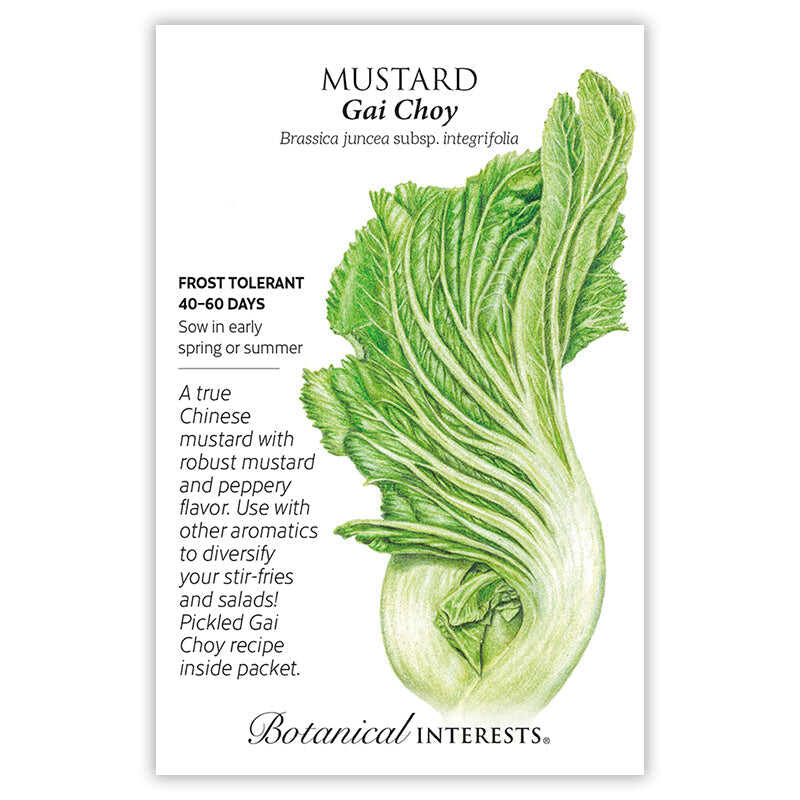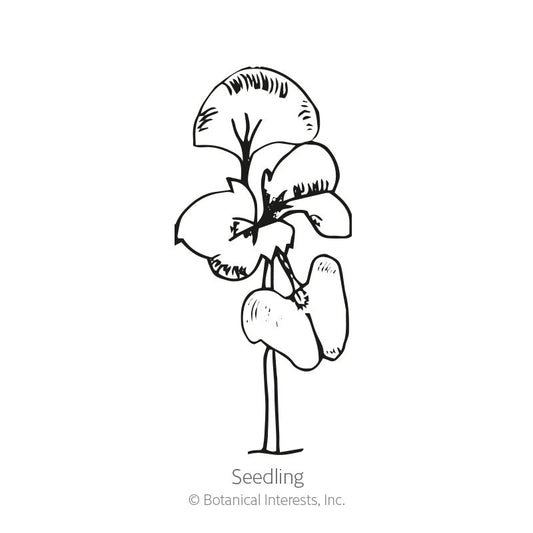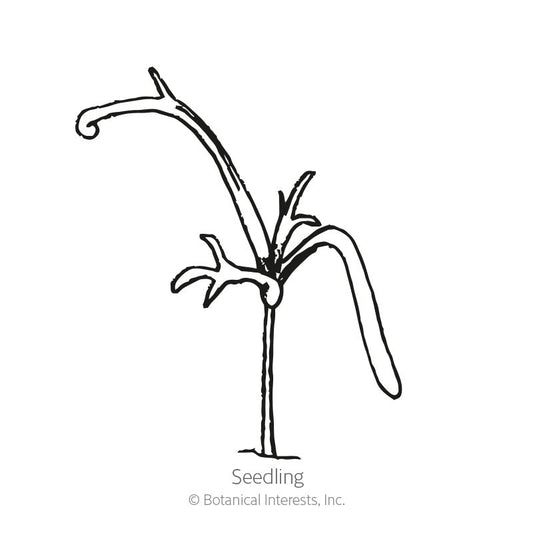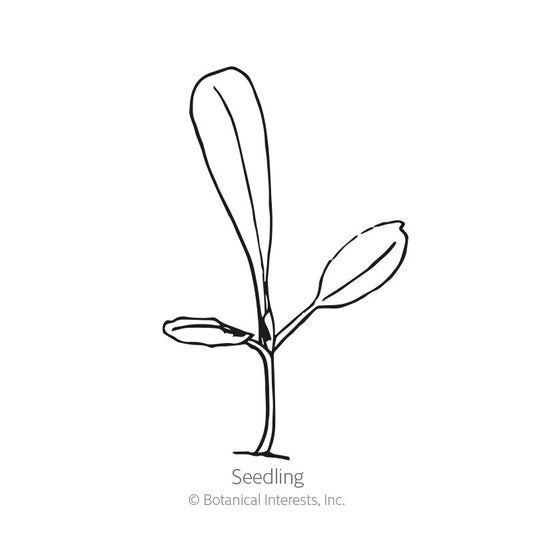


- Variety Info
- Sowing Info
- Growing Info
Variety Info
Days to Maturity: 40–60 Days
Family: Brassicaceae
Native: Widespread, probably Asia
Hardiness: Frost-tolerant annual
Exposure: Full sun to part shade
Plant Dimensions: 6"–10" wide and 10"–12" tall
Variety Info: Head-forming traditional Chinese mustard with crinkled, medium green leaf tips and light green to white, broad, crisp midribs.
Attributes: Frost Tolerant

Sowing Info
When to Sow Outside: RECOMMENDED. 2 to 4 weeks before your average last frost date, when soil temperature is at least 60°F; ideally 75°–85°F. Sow again in late summer for fall crop. Successive Sowings: Every 3 weeks until 10 to 12 weeks before your average first fall frost date for continuous harvest. Mild Climates: Sow in late fall through winter for cool-season harvest.
When to Start Inside: Not recommended; transplant stress can cause plants to bolt (prematurely flower).
Days to Emerge: 5–10 Days
Seed Depth: 1/4"
Seed Spacing: A group of 3 seeds every 6" –10"
Row Spacing: 12" –18"
Thinning: When 3" tall, thin to 1 every 6" –10"
Your hardiness zone is
Growing Info
Harvesting: Harvest in the morning if possible. You may start harvesting leaves when they are 2" tall, as needed; remove no more than 1/3 of the plant if regrowth is desired, or let plant grow to maturity and harvest entire plant. Late summer crops will last until the first hard freeze.










